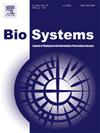一种贝叶斯方法来研究假定的视网膜微(纳米)塑料
IF 1.9
4区 生物学
Q2 BIOLOGY
引用次数: 0
摘要
人类视网膜是一种高度血管化、代谢活跃、免疫特权的神经组织,与其他器官系统中普遍存在的微(纳米)塑料(MNPs)形成鲜明对比。尽管如此,视网膜中MNPs的存在仍未得到证实,这是一个关键的空白,因为它们可能导致局部炎症、微血管闭塞,或作为糖尿病视网膜病变、年龄相关性黄斑变性或葡萄膜炎等疾病的辅助因子。此外,MNPs的不同物理化学性质——包括它们不同的大小、形状、颜色和光学特性——提出了一种有趣的可能性,即它们在视网膜内的存在可以模仿常见的眼部特征。我假设某些先前归因于其他原因的特征,例如眼底摄影中的微小离散焦点和光学相干断层扫描中的高反射视网膜焦点,实际上可能包含MNPs。这一假说不仅对眼科,而且对环境毒理学和公共卫生都具有重要的生物学意义。为了正式评估其合理性,我构建了一个贝叶斯模型,其中包含了最初的怀疑态度,并考虑了在零假设和备选假设下观察到的证据的不同可能性。该模型表明,即使具有极低的先验概率,某些成像结果的可重复性和可识别模式也可以证明显著增加的后验信念是合理的,因此需要进一步的科学探究。这项工作提供了一个概率框架来重新评估视网膜异常,并鼓励环境眼科的实证研究,没有明确证明MNP的存在。视网膜成像技术的发展可以为环境毒理学、预防医学和公共卫生提供有价值的工具,为系统MNPs暴露提供非侵入性生物标志物。本文章由计算机程序翻译,如有差异,请以英文原文为准。

A Bayesian approach to investigating presumed retinal micro(nano)plastics
The human retina, a highly vascularized, metabolically active, and immunologically privileged neural tissue, stands in contrast to the ubiquity of micro(nano)plastics (MNPs), which have been reported in every other organ system. Despite this, the presence of MNPs in the retina remains undocumented, a critical gap given their potential to contribute to local inflammation, microvascular occlusion, or act as cofactors in diseases such as diabetic retinopathy, age-related macular degeneration, or uveitis. Furthermore, the diverse physicochemical properties of MNPs – including their varying sizes, shapes, colors, and optical characteristics – raise the intriguing possibility that their presence within the retina could mimic commonly observed ophthalmic features. I hypothesize that certain features—previously attributed to other causes—such as tiny discrete foci in fundus photography and hyperreflective retinal foci in optical coherence tomography, may actually contain MNPs. This hypothesis carries significant biological implications not only for ophthalmology but also for environmental toxicology and public health. To formally evaluate its plausibility, I constructed a Bayesian model incorporating initial skepticism and considering varying likelihoods of observed evidence under both null and alternative assumptions. The model demonstrates that even with an extremely low prior probability, the reproducibility and discernible patterns of certain imaging findings can justify a significantly increased posterior belief, thus warranting further scientific inquiry. This work offers a probabilistic framework to re-evaluate retinal anomalies and encourages empirical investigation in environmental ophthalmology, without definitively proving MNP presence. The development of retinal imaging techniques for the specific detection of MNPs could provide a valuable tool for environmental toxicology, preventive medicine, and public health by offering a non-invasive biomarker for systemic MNPs exposure.
求助全文
通过发布文献求助,成功后即可免费获取论文全文。
去求助
来源期刊

Biosystems
生物-生物学
CiteScore
3.70
自引率
18.80%
发文量
129
审稿时长
34 days
期刊介绍:
BioSystems encourages experimental, computational, and theoretical articles that link biology, evolutionary thinking, and the information processing sciences. The link areas form a circle that encompasses the fundamental nature of biological information processing, computational modeling of complex biological systems, evolutionary models of computation, the application of biological principles to the design of novel computing systems, and the use of biomolecular materials to synthesize artificial systems that capture essential principles of natural biological information processing.
 求助内容:
求助内容: 应助结果提醒方式:
应助结果提醒方式:


